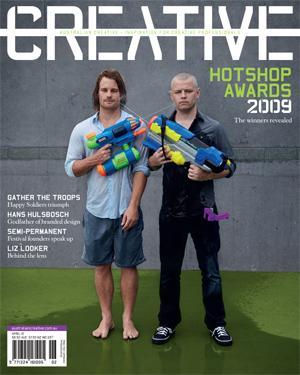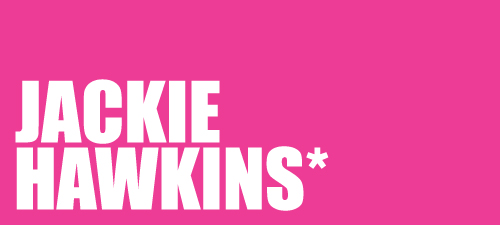
EmotionalIntell_AusCreative_April10_JH_LR
There are people you meet in life, who may amuse, entertain, even keep you on your toes, but there are few that truly delight, both intellectually and creatively. We all know them. They just have that extra something that makes us sit up and take notice, manage to keep our (otherwise waning) attention and make us miss them when they are gone. Robbie Robertson, Managing Director of experiential design consultancy, E2, is one such person. But (fortunately) you don’t just have to just take my word for it. The long list of brands that have come to E2 in the last two years of its short life is testament to their ability to not just offer, but to deliver something rather different indeed. E2 have completed over 178 projects in the last two years and are currently working on another 40, for brands both here and abroad, including Qantas, Commonwealth Bank, St George, Sony, Kodak, Westfield, Herman Miller, Virgin Mobile, News Ltd – and the list goes on.
It is not hard to see how clients are engaged by them. But reeling clients in with a fancy sales pitch is the easy part as we all know, but retaining them and nurturing them so that they become a part of the fabric of the place itself and wouldn’t even consider going anywhere else, is quite a tall order. This is where E2 excel. There are few consultancies that would clear desk space in the studio for clients to work alongside the team should they so wish (TrueLocal and BCU), agree to their client presenting creative back to their Board without the need for E2 to even attend (Tarocash and Virgin Mobile) or could win over a client by likening them to a Roast Chicken Dinner (Commonwealth Bank).
So, where did all this come from and exactly how are they managing to achieve so much, so quickly? The driving force behind E2 is the collaborative partnership of Robbie Robertson and Creative Director Alex Ritchie, both ex-Imagination in London – the pioneering consultancy arguably the forefather of experiential design – that has worked with some of the world’s top brands from Diageo to Aston Martin. But a more recent meeting of minds at branding giant Landor, compelled them to do their own thing “we saw a niche in the market: experiential environments but from an extremely strategic and multi-disciplined approach” explains Robertson. “A lot of companies are doing it and very well, but often as an add-on or a reaction to a larger brief, we look at environments not just from the usual floor management perspective but from a brand perspective, from a communications perspective, we look at it from a multi-faceted approach.”
At the heart of their philosophy is their belief in the ‘show me’ aspects of a brand’s delivery believing that it is experience, rather than information, that is the prime driver of human behaviour. This means placing as much of a budget into how the consumer actually interacts with a brand, across all five senses, and exploring how the brand can better respond to the needs and desires of the customer. As Creative Director Alex Ritchie explains “In our opinion, starting from the bottom up—from the customer’s viewpoint—rather than the top down from the corporate viewpoint yields a can’t-fail strategy. That is, consumer research that observes and studies consumers’ interactions with products and services yields the most valuable research. Not merely developing products and brand communications based on what the corporate R&D and marketing departments think their customers want. Observing how consumers interact with products or services, and then getting their feedback as to what they like and don’t like, as well as what they would prefer to see—and unlocking the Enjoyment Assets therein—helps companies and creative consultancies design the most satisfying customer experiences.”
This research and discovery phase is so important to E2 that it is not until 50% of the way through their carefully crafted 6-stage process that they even pick up a pen, which, by Robertson’s own admission “scares the living daylights out of some clients, but once we take them through the process they get very excited by it because they have the confidence that the creative solution that we are going to deliver them is based on evidence, as opposed to just ‘here’s 3 ideas just choose whichever one you think is great’”! He continues, “often creative agencies are asked to come up with 3 different options, well we don’t. We come up with one, because it is based on strategy. There is only one solution. There is only one creative environment that is actually going to work for them.”
For any potential naysayers, they sometimes go one step further, taking the solution to market and testing it giving the client confidence that before they even lay a brick, or paint a wall that the solution is going to work for them, ”we can go to the Board and say, not only have we actually tested the idea with your actual customer base, we know it can be done on time, on budget and here is the finalized package. Don’t take our word for it: take your consumer’s word for it” Robertson explains. But it hasn’t always been this easy. It has taken Robertson and Ritchie years of practice to hone the process that they eventually brought into play at E2. Equally, to convince clients that they really need to stop thinking about their brand in a 2-D fashion and start thinking about in which sense/s it has brand recall. Robertson highlights Singapore Airlines as a smart example of brand intelligence “do you know, that every single airhostess at Singapore Airlines wears the same perfume?”
It is an approach that certainly seems to work for E2. For Qantas it’s about investing as much of their $10 million budget into the user end experience, so that employees can touch, see, hear and smell the brand’s customer service excellence. The result? The Qantas Centre of Service Excellence has generated an estimated $1.5 million worth of PR, with featured publications in Australia and overseas. It has set the benchmark for airlines globally in how to excel in customer service, propelling the Qantas brand back to the top. For Commonwealth Bank, it’s about addressing the state of anxiety that many consumers find themselves in when dealing with financial institutions, and alleviating this through considered and intelligent use of space and new ‘open teller’ systems. The result? Since its inception in April 2008 this Sydney Olympic Park branch has doubled the amount of foot traffic expected in a branch of this size and demographic and has been deemed to be the ‘bank of the future’ by the financial service industry.
These are exciting times for E2. Currently, amongst other projects, they are completing the The Australia-Indonesia Facility for Disaster Reduction in Jakarta, for the Australian Government – the first time the Government has allowed a logo without inclusion of their emblem and are down to the last two, as a part of the Multiplex team, for the development at Barangaroo. They will be opening an office in Singapore early 2010, Beijing and Abu Dhabi later in the year and a London office by 2011. This is not to mention, their new venture ‘Place Associates’ specializing in city-branding and place-making, that commenced trading earlier this year.
Perhaps one of the reasons E2 seem to be doing so well in such a short time frame is by knowing what they’re good at – and sticking to it. If they don’t truly believe that what they present to a client is unique and different from other agencies, if they don’t think they are the right fit for a job or that they won’t win a project, they simply won’t go for it – to the point that they’ve found themselves turning down offers of work. Such straight talking has earned them an increasing reputation for excellence in their field, and it is a field in which they seem to have taken ownership. Their work is category defining; no one else seems to be doing what E2 are doing. B&T obviously think the same, awarding them ‘Experiential Agency of the Year’ in 2009. After years of working for someone else and knowing there was much more that could be done, Robertson and Ritchie have stuck their necks out, specialized, and have seen the potential for what it is.
